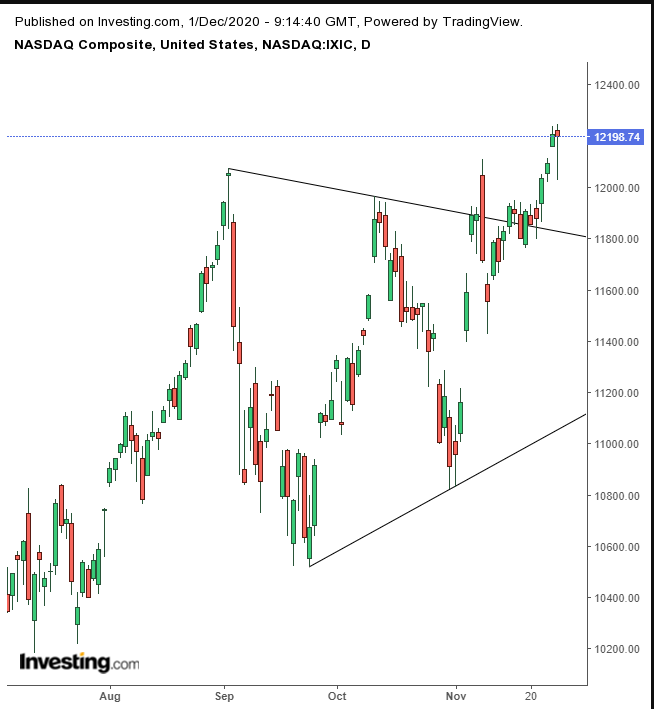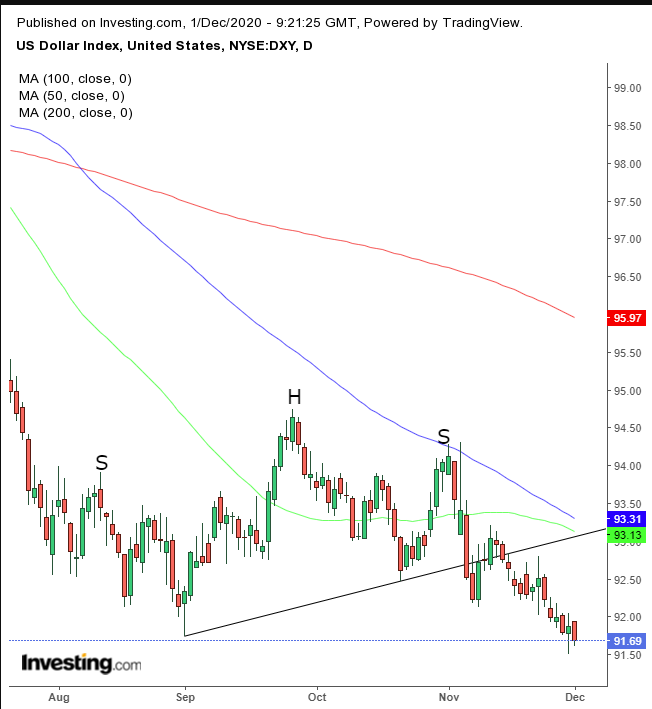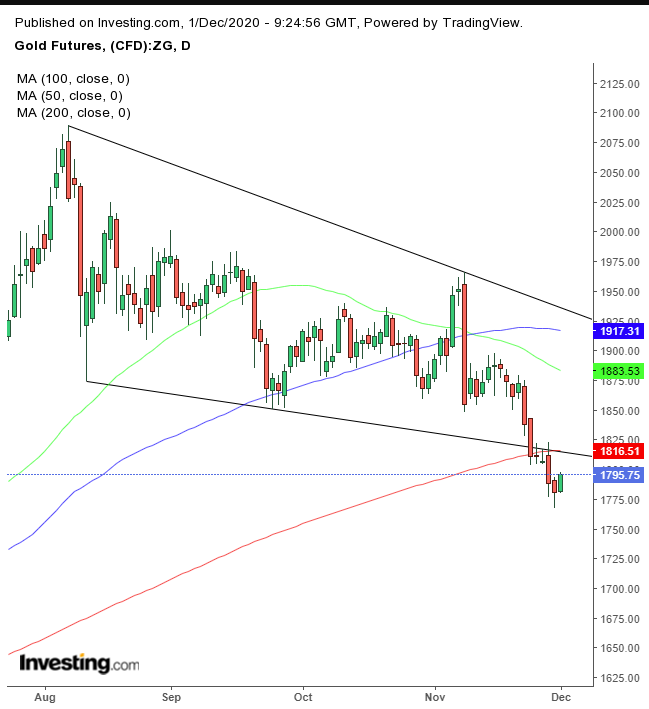- China manufacturing soared to a decade-high level
- Bitcoin reaches new record
- Federal Reserve Chairman Jerome {{ecl-1739||Powell testifies before Congress on Tuesday and Wednesday.
- On Friday, the US employment report is expected to show more Americans headed back to work in November, though at a slower pace than October.
- Futures on the S&P 500 Index advanced 0.7%.
- The Stoxx Europe 600 Index advanced 0.4%.
- The MSCI Asia Pacific Index climbed 1.1%.
- The MSCI Emerging Markets Index climbed 1.2%.
- The Dollar Index fell 0.3%.
- The euro advanced 0.3% to $1.1968
- The British pound climbed 0.5% to $1.339.
- The onshore yuan strengthened 0.2% to 6.569 per dollar.
- The Japanese yen was little changed at 104.28 per dollar.
- The yield on 10-year Treasuries dipped less than one basis point to 0.84%.
- The yield on two-year Treasuries dipped less than one basis point to 0.14%.
- Germany’s 10-year yield declined one basis point to -0.58%.
- Britain’s 10-year yield sank one basis point to 0.293%.
- Japan’s 10-year yield sank one basis point to 0.02%.
- West Texas Intermediate crude dipped 0.4% to $45.18 a barrel.
- Brent crude decreased 0.3% to $47.72 a barrel.
- Gold strengthened 0.9% to $1,792.49 an ounce.
Key Events
On Tuesday, US futures, including for the Dow, S&P 500, NASDAQ and Russell 2000, rebounded after underlying gauges retreated from record highs on Monday in the worst equity selloff in a week. European stocks were up this morning after their worst decline in a month. Earlier today, Asian stocks were boosted by strong economic data, particularly from the region's biggest economy, China.
Gold recovered but remains under pressure and the dollar is trading lower.
Global Financial Affairs
In Europe, automakers and mining companies pushed the Stoxx 600 Index to a higher open.
Asia was green across the digital board after factory activity in some of North Asia’s largest export-led economies jumped in November along with China’s recovery.
South Korea’s manufacturing PMI extended last month’s growth above the expansion-mark to 52.9 from 51.2, attaining the highest reading since February 2011. Japan edged toward positive territory, showing a 49 reading, from 48.7, its highest result since August 2019.
But the strongest reading came from China. Its Caixin manufacturing PMI of 54.9, showed activity soared to the highest in a decade. A second PMI gauge, the government's official manufacturing PMI rose to 52.1, its highest in three years, according to the National Bureau of Statistics. While economists anticipate that China’s recovery will hold through the winter, they expect that exports will drop as rising case numbers in the US}} and Europe dent demand.
US stocks receded on Monday during the Wall Street session as investors took profits at the end of the best month since April—when stocks exited a bear market in record time—even after the worst drop in a week on Friday. Prior to Friday, global stocks and US small caps enjoyed the biggest jump in their respective histories. The declines took place amid a reversal in the cyclical rotation from stocks that benefitted from lockdowns and those that underperformed.
To that effect, the NASDAQ Composite hit a new all-time high, although the NASDAQ 100, which includes the mega tech stocks, did not.

From a technical perspective, the NASDAQ Composite’s hanging man suggests a possible return-move to a symmetrical triangle, before the index breaks new ground.
Yields on the 10-year Treasury note rebounded from a gradual, three-day decline,

Treasury yields had found support by the 50 DMA, which has been tracing the bottom of a rising channel as it crossed above the 200 DMA in late-October, triggering a golden cross, suggesting yields will continue to climb, as investors rotate into stocks.
Falling yields weighed on the dollar.

The greenback is retesting its lowest level since Apr. 27, 2018—after completing a H&S continuation pattern as the global reserve currency resumes its downtrend.
Gold finally responded to the USD weakness, but likely too little too late. November was the worst month for gold in four years—over the course of the month it dropped 7%.

The yellow metal has already blown out a falling wedge and crossed below the 200 DMA, making an advance an uphill battle rife with resistance.
Bitcoin, on the other hand, surged 8.4%, rising for the third day and posting a total gain of 14.9%, after the rout during the pandemic pushed the digital currency leader to the lows of $4,000. It's currently trading at $19,321 at time of writing.
On Monday, the cryptocurrency notched a new record at $19,864, for the first time since Dec. 16, 2017. This miraculous recovery has investors torn between investing in gold, which has been failing to rise either on dollar weakness or on its haven status, and what's sometimes referred to as 'digital gold.' Investors are taking greater note of cryptocurrencies as a valid form of investment to include within their portfolios.
Oil rebounded from a fall after continued bickering among OPEC+ members about output amid divergent interests has resulted in the delay of an official meeting. A measure of oil trader positions shows a record number of shorts on Brent futures, 470,000 according to ICE Futures Europe data, yet we’re betting that WTI will shoot higher, though we await one more technical signal.

Oil has broken out of a falling channel and formed a pennant, whose upside breakout is now developing a bearish flag, bullish after the 9.5% surge in just 3 days. Another upside breakout will signal an additional such move. The momentum-based ROC signals this sort of completion.
